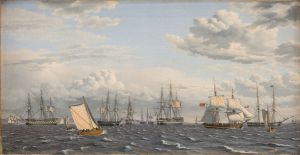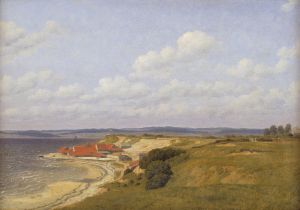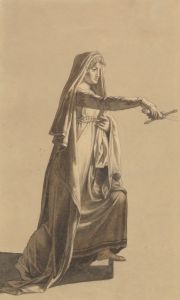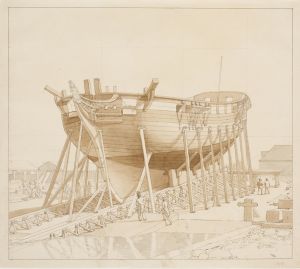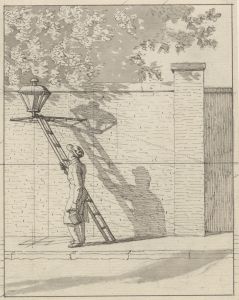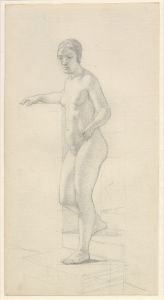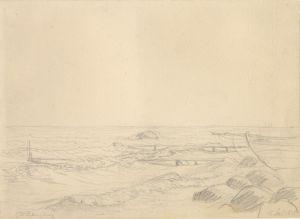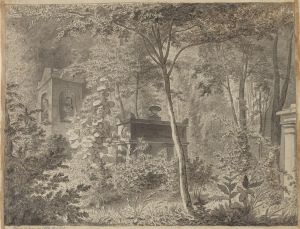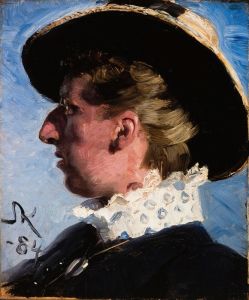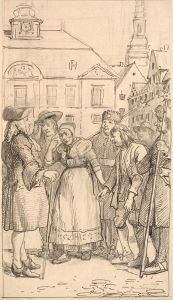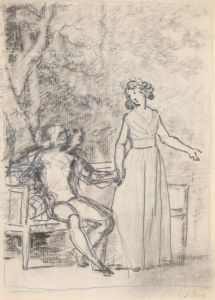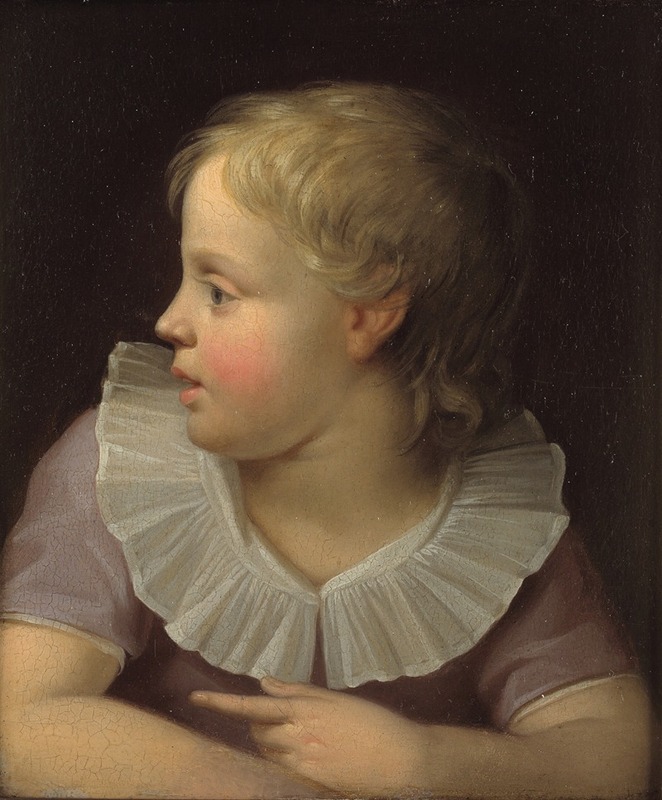
Maleren Jens Juels søn, Jens
A hand-painted replica of Christoffer Wilhelm Eckersberg’s masterpiece Maleren Jens Juels søn, Jens, meticulously crafted by professional artists to capture the true essence of the original. Each piece is created with museum-quality canvas and rare mineral pigments, carefully painted by experienced artists with delicate brushstrokes and rich, layered colors to perfectly recreate the texture of the original artwork. Unlike machine-printed reproductions, this hand-painted version brings the painting to life, infused with the artist’s emotions and skill in every stroke. Whether for personal collection or home decoration, it instantly elevates the artistic atmosphere of any space.
"Maleren Jens Juels søn, Jens" (The Painter Jens Juel's Son, Jens) is a painting by the Danish artist Christoffer Wilhelm Eckersberg, who is often referred to as the father of Danish painting. This artwork is a portrait of Jens Juel's son, Jens, and it is a significant piece in Eckersberg's oeuvre, showcasing his skill in portraiture and his ability to capture the essence of his subjects.
Christoffer Wilhelm Eckersberg was born on January 2, 1783, in Blåkrog, Denmark, and he is considered one of the most important figures in Danish art history. He studied at the Royal Danish Academy of Fine Arts in Copenhagen and later traveled to Paris and Rome, where he was influenced by the neoclassical style and the works of artists such as Jacques-Louis David. Eckersberg's time in Rome was particularly formative, as he developed a keen interest in capturing the naturalistic details and the character of his subjects.
The painting "Maleren Jens Juels søn, Jens" was created in 1831. Jens Juel, the father of the subject, was also a renowned Danish painter, known for his portraits and landscapes. Jens Juel's influence on Danish art was significant, and his legacy continued through his son, who became the subject of Eckersberg's portrait.
In this painting, Eckersberg demonstrates his mastery of the portrait genre. The composition is simple yet effective, focusing on the young Jens Juel, who is depicted with a calm and composed expression. The background is plain, which helps to draw attention to the subject's face and attire. Eckersberg's use of light and shadow adds depth to the portrait, highlighting the contours of Jens' face and giving a sense of three-dimensionality.
Eckersberg's attention to detail is evident in the meticulous rendering of Jens' clothing and features. The texture of the fabric and the subtle variations in skin tone are captured with precision, showcasing Eckersberg's technical skill. The artist's ability to convey the personality and inner life of his subjects is also apparent in this work, as Jens appears thoughtful and introspective.
This portrait is an excellent example of Eckersberg's contribution to Danish art, particularly in the realm of portraiture. His works are characterized by their clarity, precision, and the ability to capture the individuality of his subjects. Eckersberg's influence extended beyond his own paintings, as he was also a prominent teacher at the Royal Danish Academy of Fine Arts, where he mentored a new generation of Danish artists.
"Maleren Jens Juels søn, Jens" is housed in the Statens Museum for Kunst (the National Gallery of Denmark) in Copenhagen. The painting is part of the museum's extensive collection of Danish Golden Age art, which includes works by Eckersberg and his contemporaries. This period in Danish art history is noted for its emphasis on realism, attention to detail, and the portrayal of everyday life and people.
In summary, "Maleren Jens Juels søn, Jens" by Christoffer Wilhelm Eckersberg is a significant work that highlights the artist's skill in portraiture and his ability to capture the essence of his subjects. The painting is an important part of Danish art history and continues to be appreciated for its technical excellence and emotional depth.






